Last update: Dezember 06, 2004

| Built at: May.28.2001 Last update: Dezember 06, 2004 |
 |
Diese Seite ist auch in Deutsch verfügbar. |
| If you have a small kite
and only use thin kiteline, then you can find a lot of
factorymade spools out of plastic. Some of this spools
are unbreakable in fact. But if you need a kiteline with 3mm in diameter, you have problems to finde a good spool. I have made the experience, that I can´t find an unbreakable version. |
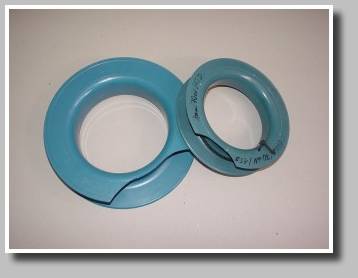 |
 |
Therefore I have made my own wooden
spools for kiteline out of plywood and wooden plugs. With a little workmanship everybody can do the same. This spools are very vigorous and you can make them in different sizes. Top roll: Middle roll: |
Drawing the measurements
 |
I use plywood with 5 mm thicknes and
wooden plugs with 8 mm in diameter for the mounting of my
spools. At first I have drawn the outside diameter with 240 mm, the inside diameter with 100 mm and the perforating circle with 115 mm with the pair of compasses first. Then I have taken down the 18 drillings for the wood plugs on the perforating circle with the pair of compasses. |
| Then the two side plates were sawed with the jigsaw. You must take care that you saw beautifully around and exactly at the line, so you then doesn't need to sand much later. I then have drilled a hole with 4 mm of diameter and bolted the two side plates together into the middle to work them together. | 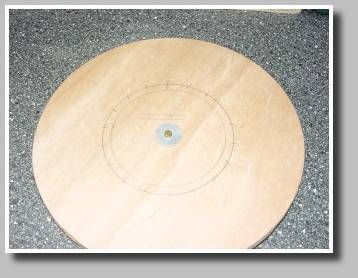 |
Drilling the holes for the wooden plugs
| I have drilled the holes for the wood plugs now. It is important that you drill the two wood plates simultaneously so that the drillings are exactly in the same order. In addition, you must drill exactly right-angledly. This only workes well with a stand drill or with a hand drill in a drilling stand. I used a drill whith 3 mm in diameter at first and 8 mm later. | 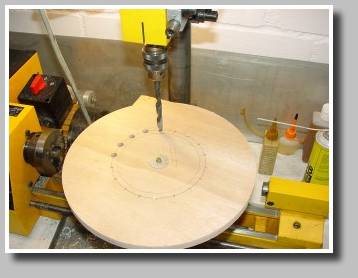 |
 |
After the holes were drilled I have sanded the edges of the spool properly. I have marked the two parts on the edge with two lines so that I can put them together in the same position like they were when I glue them together. |
Sawing the aperture
 |
 |
|
| Then I have cut the interior circles out with the jigsaw. After this I sanded the edges beautifully clean so that the spool lies well in the hand then later. | ||
Final assembly
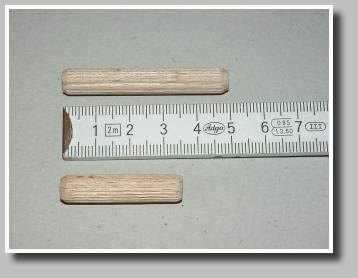 |
You can make your spool in different widths by using different wooden plugs. A small spool gives a good handling. But if you need a 3 mm line, the spool must have a bigger width. I used wooden plugs with 50 mm in length for this spool. |
| At first the wood plugs
are spread with a little wood glue on one end and then
you have to beat them with slight hammer blows right-angled
in a side plate. You must work a little more quickly now and don´t have a break. So ask for the lunchtime before :-). The wood plugs be spread with glue and the second side plate put on on the other side now. It is important that you look at the before appropriate markings and put the parts together just like they were drilled. |
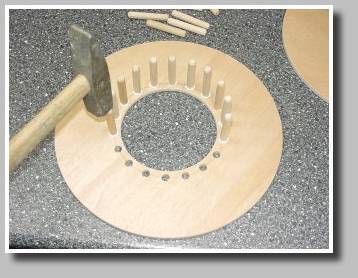 |
|
| You put a waste piece of
plywood on the side plate and beats with slight hammer
blows on the wood plugs until the second side plate is in
the right position. If the glue is dry I have sanded the spool oncemore and after that I have painted it so that the humidity can take no affect. |
 |
Capacity of my rolls for your orientation
| Outside diameter (mm) |
Inner diameter (mm) |
Inner width (mm) |
2 mm Polyesterline |
3 mm Polyesterline |
| 190 | 114 | 39 | 200 m | |
| 210 | 122 | 33 | 225 m | just under 100 m |
| 240 | 122 | 31 | a little more than 300 m | |
| 240 | 122 | 39 | 400 m | 160 m |
Manfred
http://KAP-Man.de
Manfred